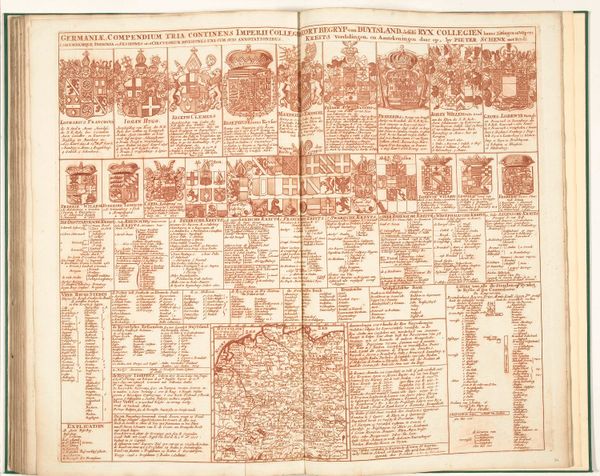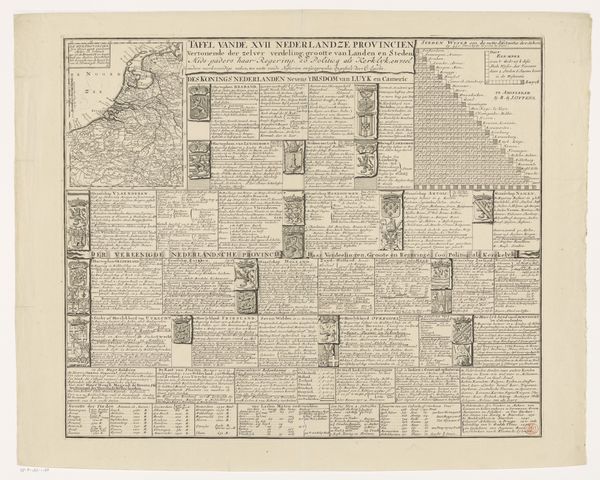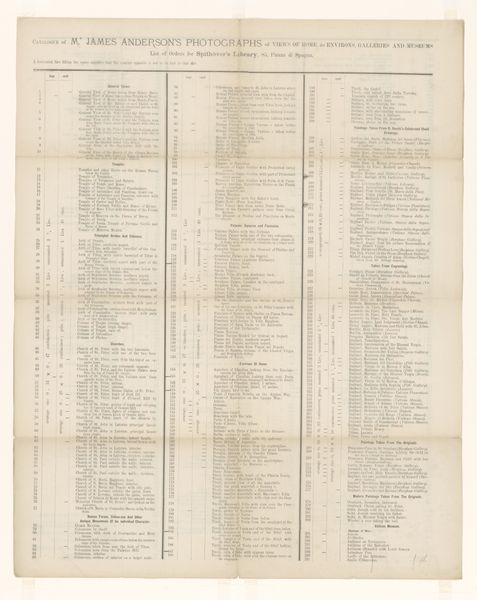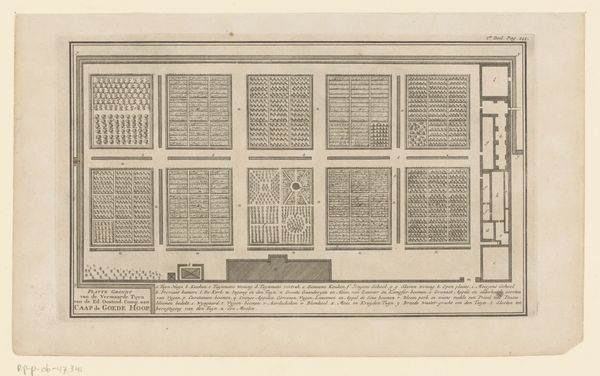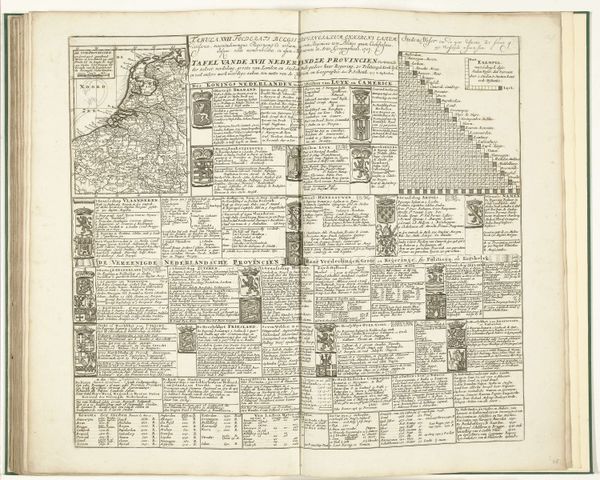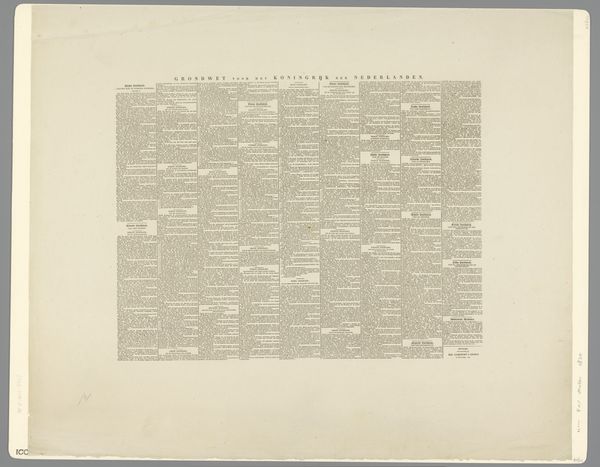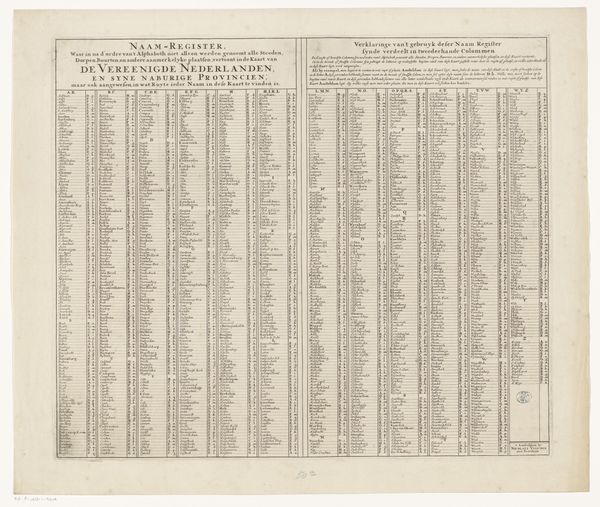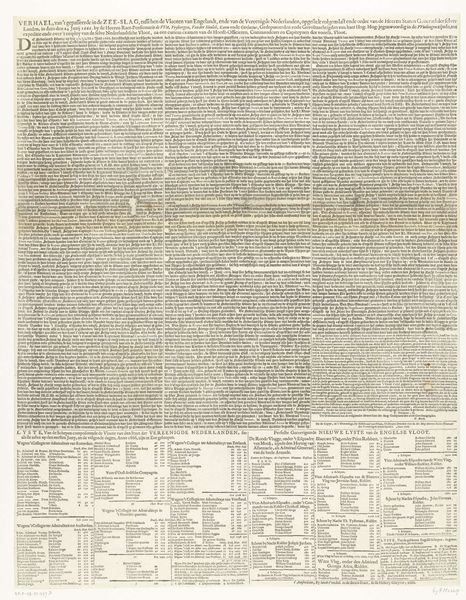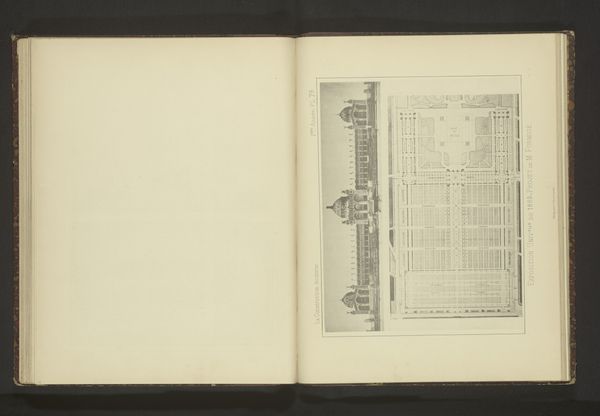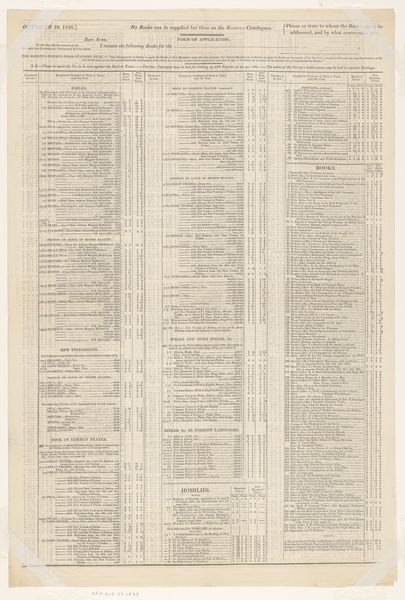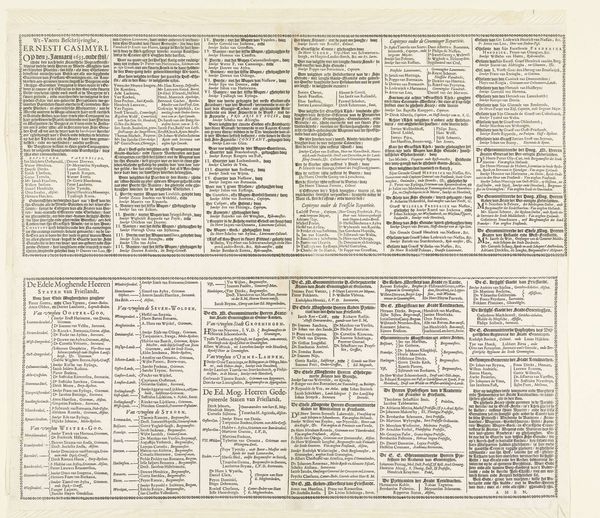
graphic-art, print, engraving
#
graphic-art
#
baroque
# print
#
history-painting
#
engraving
Dimensions: height 538 mm, width 635 mm
Copyright: Rijks Museum: Open Domain
Editor: So, here we have Pieter Schenk's "Schouwburg van den oorlog (blad XXXVI)" made between 1706 and 1722. It's a print, an engraving, essentially graphic art. It's dense, filled with text; it feels more like a ledger than an artwork. What catches your eye? Curator: What strikes me is how this piece presents information – and thus history itself – as a product, a commodity, created and disseminated through the reproducible medium of engraving. The very act of creating this "theater of war" via print underscores how conflicts were processed and consumed. How accessible would these printed chronicles of war be, and who was the intended audience? Editor: It’s fascinating to consider the intended audience and accessibility of such detailed prints. Do you think the dense, text-heavy style contributes to that sense of information as commodity? Curator: Precisely! The format itself implies a kind of efficiency. The use of engraving – a technique allowing for mass production – enabled widespread circulation of narratives and, importantly, control of these narratives. It invites questions about who profits, not just financially, but ideologically, from these representations. Is there a particular king, dynasty or region that has significantly more printed “coverage”? Editor: I see what you mean. It prompts a different understanding of baroque aesthetics too - moving away from pure aesthetics towards the material conditions of information production and consumption at that time. It also blurs the distinction between history painting and document. Curator: Exactly! It’s not just about portraying events, but about packaging them for a market. Thinking about the cost of paper, ink, the labour involved in engraving, allows a fresh understanding of this historical document and the dynamics that shaped its creation. Editor: This really has opened my eyes to consider more the economic aspect of creating what one often thinks of as something only about artistic, not commercial, merit. Thanks! Curator: My pleasure! It is critical that we investigate the means of production as actively informing cultural output.
Comments
No comments
Be the first to comment and join the conversation on the ultimate creative platform.
